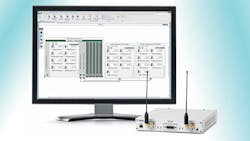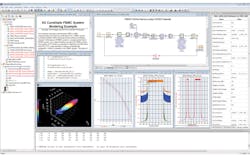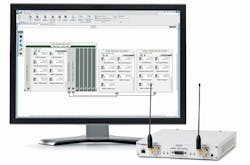Almost any electronic technology has one truism attached to it: You can’t develop it if you can’t test it. This is particularly the case with wireless and other communications products. Thankfully, there’s a great group of test-equipment manufacturers who work out at the leading edge of the technologies and beyond, giving us instruments that can test and measure even the most exotic and complex equipment.
To that point, we’re now beginning to see instruments for developing next-generation (5G) wireless gear. The new 5G category, let alone the emerging Internet of Things (IoT) business, should keep instrument manufacturers busy for the coming years.
Though 5G systems aren’t yet fully defined and standards still not set, most in the industry agree to some basic characteristics. The frequency range will probably be in the millimeter-wave spectrum around the frequencies of 28, 38, 60, and 73 GHz. Most systems will likely use heavy multiple-input, multiple-output (MIMO) as well as adaptive beamforming antennas. Also, the technology may involve new modulation methods. A leader among the organizations involved in 5G research is NYU WIRELESS of the New York University Polytechnic School of Engineering.
One of the first available 5G development products comes from Keysight Technologies. Its 5G Baseband Exploration Library contains a significant amount of intellectual property related to signal processing that helps facilitate physical-layer development. For example, it offers a variety of 5G candidate waveforms for orthogonal and non-orthogonal multicarrier modulation. In addition, the Library includes signal-processing methods to implement MIMO and antenna beamforming. Other Library features are transmitter and receiver models that can be optimized for various design options.
The development Library includes source code, models, subsystems, simulation examples, and infrastructure components to help engineers develop and verify advanced equipment designs. Supplementing the Library is the company’s SystemVue simulation platform. It offers advanced digital-signal-processing (DSP) blocks for potential 5G waveforms, transmit and receive simulation models, possible schemes for MIMO, spatial multiplexing, and space-time coding. The package also provides for waveform generation. Figure 1 shows a few of the potential applications of this 5G development system. The 5G Baseband Exploration Library (W1906BEL) and SystemVue platform (W1465) are available now.
Another new 5G development system, National Instruments’ LabVIEW Communications System Design Suite, is a combination of hardware and software that helps expedite 5G designs. With the system, engineers can use the graphical programming capability of LabVIEW to build flow models of their designs and then test them. Different architectures can be tried out, and it’s even possible to build new algorithms that can be programmed directly into an FPGA.
Software can be tested using the NI software-defined radio (SDR) hardware. One such example is testing the algorithm for called generalized frequency division multiplexing (GFDM)—the potential replacement for OFDM.
The combination of LabVIEW software and the SDR hardware (Fig. 2) makes it possible to test all aspects of a new design. It can significantly shorten the time from concept to prototype—from years to weeks. LabVIEW Communications includes built-in application frameworks for Wi-Fi and LTE that enable wireless engineers to focus on innovating specific components of existing standards, rather than designing new algorithms from scratch.
Look for more 5G development systems and equipment as test-instrument manufacturers update and enhance their existing products to handle the advanced standards.
This file type includes high resolution graphics and schematics when applicable.
About the Author

Lou Frenzel
Technical Contributing Editor
Lou Frenzel is a Contributing Technology Editor for Electronic Design Magazine where he writes articles and the blog Communique and other online material on the wireless, networking, and communications sectors. Lou interviews executives and engineers, attends conferences, and researches multiple areas. Lou has been writing in some capacity for ED since 2000.
Lou has 25+ years experience in the electronics industry as an engineer and manager. He has held VP level positions with Heathkit, McGraw Hill, and has 9 years of college teaching experience. Lou holds a bachelor’s degree from the University of Houston and a master’s degree from the University of Maryland. He is author of 28 books on computer and electronic subjects and lives in Bulverde, TX with his wife Joan. His website is www.loufrenzel.com.



